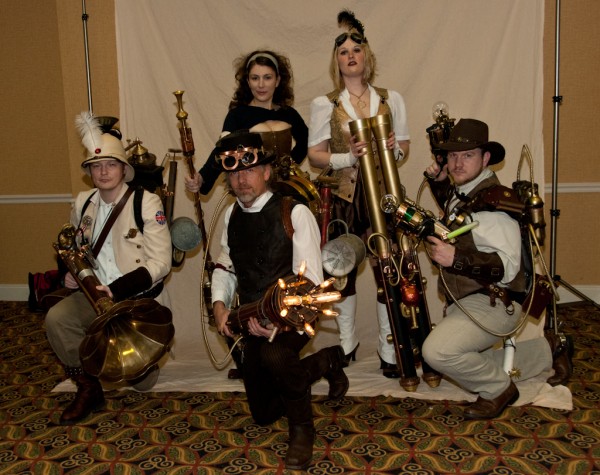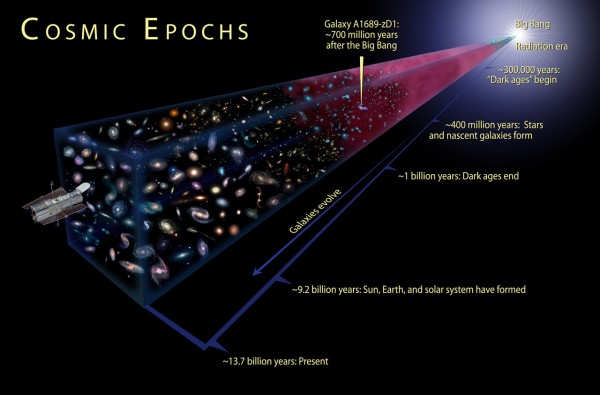"The question I always get is, 'Why didn't you throw Dr. Smith off the Jupiter?' I get that all the time." -Mark Goddard
Here at Starts With A Bang, we focus on the promises, possibilities and physical groundings of our Universe, while very rarely venturing into fiction and fantasy. But, very often, it's the fantastic imaginings of fiction and fantasy that help inspire new directions in science. Have a listen to German guitar great Peter Ratzenbeck's tune,


- an extensive program of talks, Q&A sessions and roundtables,
- a world-class art show,
- Gaming, including RPGs, CCGs, LARPs and board games,
- a science and fiction seminar for educators,
- Science-fiction writing and sci-fi art contests,
- TV, movies, music, and, perhaps the second-best thing ever,
- the annual (and guaranteed to be fantastic) Masquerade Ball! (Followed by a Dance Party!)
Why just the second best thing ever? Because those of you who show up on Saturday, March 24th at 11:00AM will get to see the world premiere of my latest, greatest public talk, "Where Does This All Come From?" And I mean it: all of this!
There have been plenty of great guests and participants in the past, and you can read some reviews and recaps of last year's conventions here, by Stephen Zimmer, and here, by Frank Tuttle.
You can still Register here if you want to come (still only $45), and if any of you will be there and want to get together for coffee, drinks, Q&A or any other fun activities, let's make it happen. Hope to see you there!



Oh you young whippersnappers...never had the joy of seeing Lost in Space the first time around. (musical note: next time you watch an episode, make a note of who composed the theme songs *there were two of them, bet a quarter none of you could hum both of them* It was somebody named Johnny Williams...his first gig actually...yes, THAT John Williams, Oscar winning composer. BUT I digress... the reason Dr. Smith was not tossed into the nuclear reactor was that he SAVED WILLS LIFE in the pilot...used a clever device that looked a lot like an old auto aerial with a ring on each end. Yes, it was his fat ass stowing away that threw the Jupiter II off course, but he did, in fact, save Wills life. And THAT, my friends, is the rest of the story. *Kiss Marta for me*
Why call 13.7 billion years the "Present" Epoch when we can call it the "MidSouthCon 30" Epoch. This is the Cosmic Epoch of "Science Fiction" is it not?
About a year ago, I came across a science article online that references Lost in Space. This paper by George A. Haloulakos and his father, Vassilios Haloulakos, discusses how the propulsion apparently used in the pilot episode of the Lost in Space TV show and the original Planet of the Apes movie might be explained scientifically. The paper was released for the 50th anniversary of Pres. Kennedy's challenge to land a man on the Moon by the end of the 1960's, so the paper is dedicated to the Apollo 1 astronauts.
Abstract: This paper examines the science of space flight as shown in classic sci-fi cinema, specifically one from a landmark TVseries â âLost in Spaceâ â the other from a film noted for one of cinema's all-time surprise endings â âPlanet of the Apes.â Both of these classic sci-fi masterpieces were produced and screened during the mid-to-late 1960s. We have focused on the original unaired pilot for âLost in Spaceâ[titled âNo Place to Hideâ and filmed in 1964] and the original âPlanet of the Apesâ [released in 1968] because the scientific content in both productions strongly reflected the era in which they were made. Unlike the content of later episodes and/or films associated with both productions, the science fact of the original works is verifiable and was more rigorously, if not consistently, applied. As such, we make the case that space flight technology depicted in these sci-fi classics was more realistic and achievable than has been previously credited â especially when viewed through the prism of the Apollo moon program from that same era. Both of these sci-fi classics presented stories about exploring new frontiers led by enterprising and courageous people. They reflected the aggressive spirit of the Apollo space program whose goal was to land a man on the moon and return him safely to Earth before the close of the 1960s. It is with respect and honor that we dedicate this paper to the memory of the Apollo 1 astronauts whose courage and ultimate sacrifice provided the foundation for our nation successfully achieving that goal.